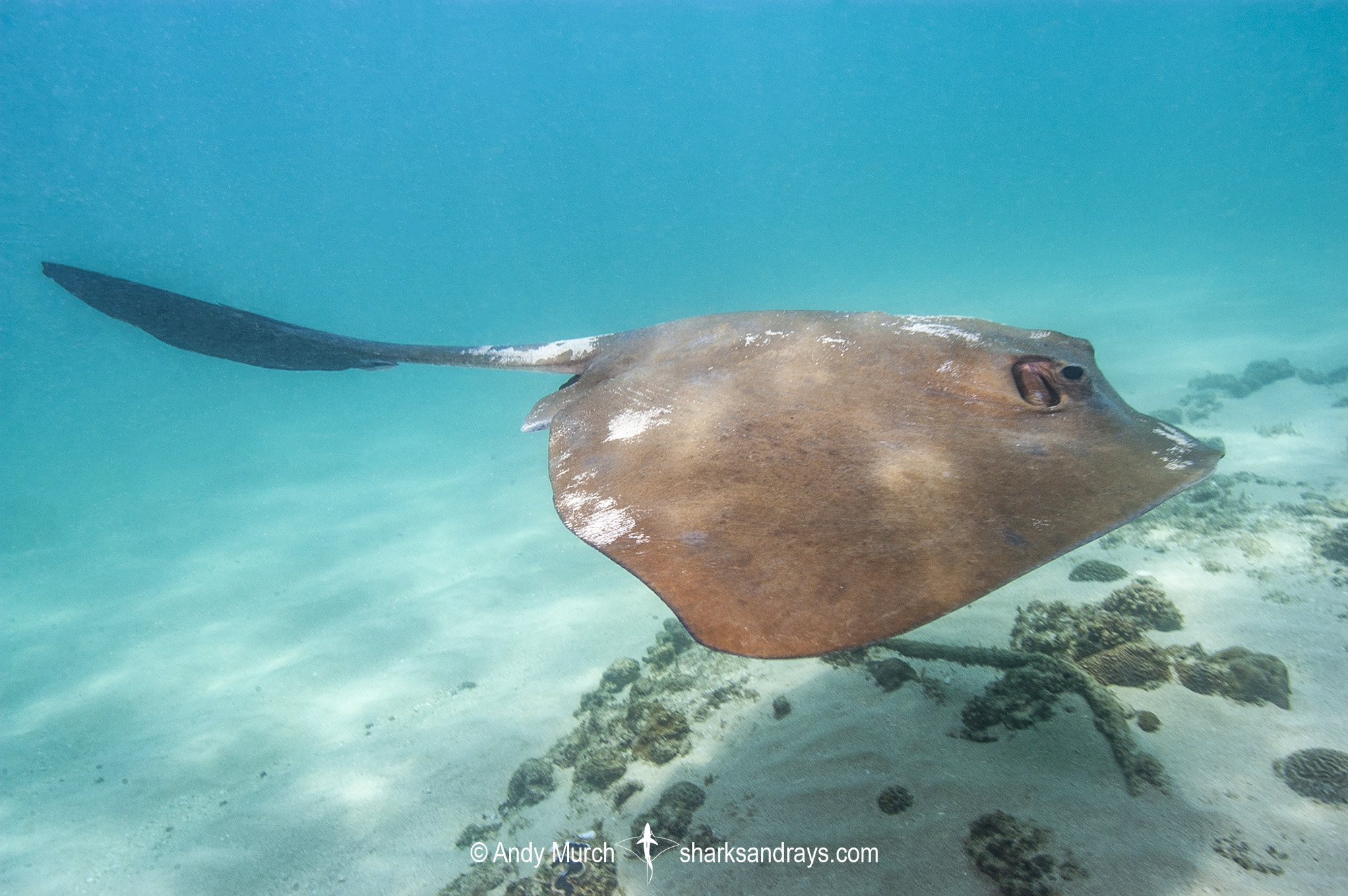Common names
Broad Cowtail Stingray.
Binomial
Pastinachus ater.
Synonyms
Pastinachus atrus, Taeniura atra.
Identification
A very large stingray with a kite-shaped disc that is slightly wider than long; disc width approximately 1.2-1.3 x length. Snout fairly short and rounded or obtusely angular. Small protruding lobe at tip. Anterior margins of disc straight. Pectoral fin apices somewhat angular. Pelvic fins large with narrowly rounded apices.
Eyes small and somewhat protruding. Snout length 1.7-2.3 x combined eye and spiracle length.
Mouth small and arched, with 5 oral papillae. Jaws bulbous. Nasal curtain skirt-shaped with a central crease (bi-lobed). Nostrils thin, positioned obliquely.
Wide band of flattened denticles on central disc in adults. Usually 4 small heart-shaped thorns on midline at shoulder. No other enlarged denticles or thorns present on midline. Tail fairly short, tapering gently to tail sting, then filamentous to tip. Tail length (when intact) approximately 2x disc width. Dorsal finfold absent. Ventral finfold long and very deep; depth beyond caudal sting 3.6-5.7 x tail height. Ventral fold base length 0.74-0.92 x disc width. One caudal sting usually present; set well back on tail.
Colour
Dorsum greyish-brown or almost black. Ventrum white, often with a thin dark margin. Tail beyond caudal sting usually dark. Ventral finfold dark.
Size
Maximum disc width 200cm. Disc width at birth 18cm.

Conservation Status
VULNERABLE
The broad cowtail stingray is targeted for its meat, which is consumed locally and sold overseas. Although no species specific catch data is available from Southeast Asia, the overall catch of large non-specific rays has declined by 50–99% in the last 75 years.
In Australia, the broad cowtail stingray is one of the most commonly encountered large rays and is probably stable.

Habitat
Tropical seas. On sand and mud, sometimes adjacent to reefs. From shallow estuaries to at least 60m. Occasionally enters freshwater.
Distribution
Indian Ocean and equatorial western Pacific. Madagascar, East Africa, Arabian Peninsula (including the Persian Gulf), India, Southeast Asia, northern Australia, and New Caledonia.
Reproduction
Matrotrophic aplacental viviparity. Two pups per litter.
Diet
Diet unknown.
Behavior
Sedentary. Behavior poorly known.
Reaction to divers
Shy but approachable if accustomed to divers.
Diving logistics
The broad cowtail stingray is widespread in the Indian Ocean but probably easiest to observe in Australia. I have seen this ray in Exmouth at the navy pier but it is seen from Shark Bay on the west coast, north and east to the Clarence River in New South Wales.












